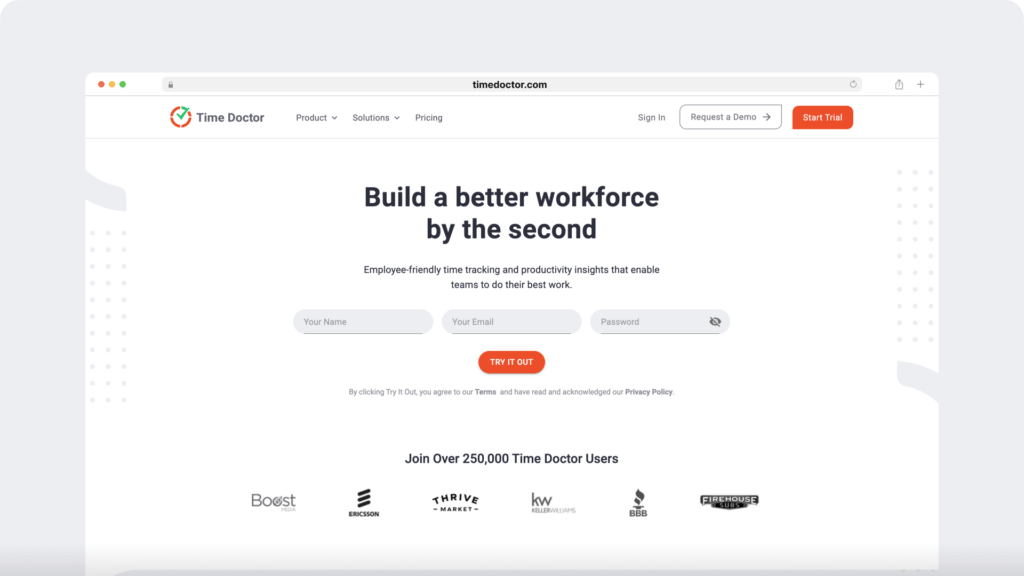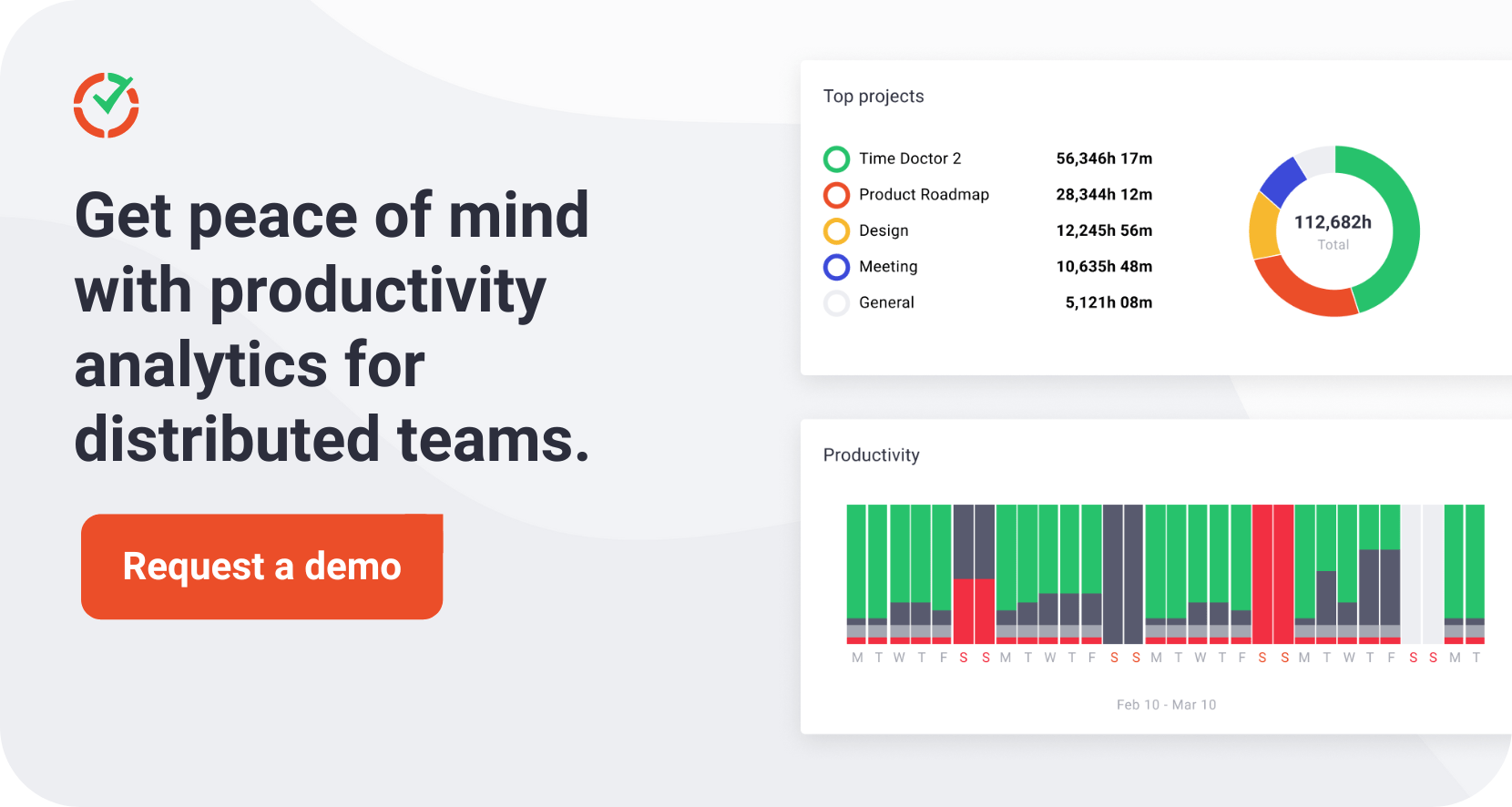Employee performance metrics have always played a role in decision-making.
However, in the Industry 4.0 era of technology-enabled efficiency, a business’s ability to gather, analyze and action employee performance data has evolved.
This has elevated the importance of employee performance metrics in strategic decision-making.
In part, that’s because employee performance is directly linked to operational outcomes, which means efficient employees are good for business.
Another part of the employee performance equation is understanding what makes an efficient team member.
Good leaders know that high-performing employees aren’t always the ones churning out the most work or clocking the most hours.
They’re the people whose contributions, both alone and in collaboration with others, move the needle on strategic projects.
So, as employee performance metrics become more important, they also become more complex.
This leads us to where we are today. Organizations have so much data at their disposal and are eager to uncover the actionable insights hidden inside reporting dashboards, but where do they start?
Understanding employee performance metrics
Employee performance metrics have come a long way since the early days of production-focused businesses.
Success is no longer solely tied to output. Productivity is still important, of course, but there are more dimensions to our understanding of employee efficiency and effectiveness.
Employee performance metrics fall into five categories:
- Quality: An employee’s accuracy, effectiveness, and adherence to standards when completing tasks.
- Quantity: The measurable output or number of tasks completed within a specific timeframe.
- Efficiency: The ratio of quality output achieved to resources used.
- Contribution: How individual efforts support the organization’s strategic goals and objectives.
- Wellbeing: The state of an employee’s physical, mental and emotional health, and the impact on work.
With the right tools, all these categories are measurable with incredible granularity.
So, let’s break down each category to understand the 31 employee performance metrics you can use to assess your team’s performance, with actionable strategies for continuous improvement.
Quality metrics
1. Management by Objectives (MBO)
Translate big-picture organizational objectives into meaningful, specific and actionable individual goals.
(We put MBO first because it’s arguably the most important employee performance metric).
Action: Set up regular check-ins (at least weekly) to review progress towards objectives, adjust goals as necessary, and discuss support or resources needed.
2. Subjective appraisals
Gather manager feedback on work quality, potential challenges, and growth opportunities. These provide a nuanced view of employee performance, incorporating managerial insight.
Action: Train managers in unbiased evaluation techniques and effective feedback delivery.
3. Net Promoter Score (NPS)
Regularly analyze NPS data to identify trends and areas for improvement in customer service, and analyze customer satisfaction against employee performance.
Action: Provide feedback and coaching to employees to enhance customer satisfaction; set NPS targets for customer-facing teams and individuals.
4. 360° feedback
Get a multi-perspective view with feedback from peers, subordinates, and clients.
Action: Use the insights from 360° feedback to create personalized development plans for employees, focusing on both strengths and areas for growth.
5. Customer satisfaction score
Track customer feedback on specific employee interactions, for example by sending surveys after support calls or live chat interactions.
Action: Implement targeted training based on common pain points.
6. Project completion rate
Measure the percentage of projects completed on time and within budget.
Action: Analyze reasons for delays and implement process improvements.
7. Product defect rate
Track mistakes or defects identified before and after a product is released or a project is finalized.
Action: Invest in quality assurance testing and root cause analysis for recurring issues.
Quantity metrics
8. Number of sales
Closed sales is a classic metric for sales roles. But as attribution becomes easier across complex sales cycles, you can consider blending collaborative and standalone sales targets.
Action: Enhance sales training and provide tools for better customer relationship management.
9. Number of units produced
A modern take on manufacturing or data entry-type roles, tracking the pure output in widgets/units/articles/products delivered can add context to other employee performance metrics.
Action: Identify bottlenecks to streamline production processes, and provide performance incentives.
10. Calls answered per hour
An employee performance metric specific to call centers, tracking call volume and answer rate can indicate efficiency in combination with customer service scores (see #18 below).
Action: Use workforce analytics to optimize staffing levels; implement call deflection strategies for peak periods.
11. Meeting attendance & participation
Track meeting attendance and active participation to assess engagement and contribution to collaborative projects.
Action: Address participation gaps with individual coaching or team-building activities.
12. Number of completed tasks
Measure task completion rate within set deadlines to gauge individual productivity and time management.
Action: Identify bottlenecks and provide resources or training to improve efficiency.
Efficiency metrics
13. Balance quantity and quality
Metrics like ‘units produced’ don’t tell the whole story. Combine them with quality checks for a high-level view of employee performance.
Action: Establish benchmarks for both productivity and quality standards; use regular audits and reviews to ensure these benchmarks are consistently met.
14. Time management
Monitor the balance of productive/non-productive time and compare it to task completion rates to gauge how employees manage their time.
Action: Consider workforce analytics tools like Time Doctor to track time spent on tasks and identify areas for optimization.
15. Distractions
Distracted employees will take unscheduled breaks, miss meetings and deadlines, and use unproductive websites and apps more often than engaged employees – all of which are directly measurable with Time Doctor.
Action: Create a supportive work environment that addresses potential sources of distraction and provides resources for focus and efficiency, such as quiet workspaces, flexibility in work hours and self-management tools.
16. Average time per task
Track the time spent on different tasks to identify time-consuming, non-strategic, or process-heavy tasks. Comparing individual and team outcomes helps to understand if the issue is systemic or personal.
Action: Use workforce analytics to track time, set benchmarks and compare results. Regularly review task completion times to identify inefficiencies, potential process improvements or additional training requirements.
17. Customer service scores
Monitor average handling time, first-call resolution, and customer satisfaction (in call centers and customer support teams) in combination with quantity metrics (see #10) to assess service efficiency.
Action: Implement communication protocols and invest in response management tools.
18. Utilization rate
Track the percentage of time spent on productive work for roles with flexible schedules to measure how effectively employees use their working time.
Action: Regularly review utilization rates to ensure employees are neither underutilized nor overworked; adjust workloads or provide support as needed.
19. Project management metrics
One for project managers: tracking project scope/budget creep, task completion percentage and resource utilization offers insights to improve project planning and team coordination.
Action: Offer training in project management methodologies and tools; conduct post-project reviews to capture lessons learned and best practices.
Contribution metrics
20. Revenue/profit per employee
Assess overall workforce effectiveness by dividing total revenue/profit by the number of employees.
Action: Optimize roles, responsibilities, and performance targets to direct employees’ efforts toward revenue generation through strategically aligned initiatives.
21. Human capital ROI
Gauge the value of your employees by analyzing their contribution to profit minus their compensation costs.
Action: Encourage managers to mature from a cost-cutting mindset to value-adding, thereby improving employee contributions without risking overwork.
22. Absenteeism rate
Track how often employees are absent from work, including unaccounted-for periods during a workday. Excessive absences can indicate low morale or productivity issues.
Action: Investigate underlying causes, then implement wellness programs or flexible scheduling options to address issues.
23. Employee turnover rate
Track the percentage of employees leaving the company within a specific period.
Action: Analyze turnover trends to identify patterns or areas of concern; develop targeted retention strategies to address identified issues.
24. Employee engagement score
Measure employee satisfaction and commitment through surveys or pulse checks.
Action: Use engagement survey results to identify specific areas needing improvement; implement targeted initiatives to address these areas and enhance overall engagement.
25. Training completion rate
Track employee participation in, and completion of, training programs.
Action: Ensure training is relevant and accessible, and identify underlying causes of completion gaps.
26. Skills gap analysis
Identify the difference between employees’ skills and the skills needed to perform optimally in their roles. This can guide targeted training and hiring strategies.
Action: Regularly analyze skills gaps alongside training and development results to identify employees who are motivated to improve, and those who might need more support.
27. Customer retention rate
Loyal customers are significantly more valuable than new ones. Monitor customer retention and loyalty rates (e.g. through repeat purchases, loyalty programs or cross-selling) and translate outcomes to team-based targets.
Action: Implement strategies to connect back-of-house employees with customers and customer-facing teams.
Wellbeing metrics
28. Number of active projects
Monitor individual and team workloads to prevent burnout and ensure everyone works to their strengths.
Action: Regularly review individual and team workloads using an integrated workforce analytics and project management workflow; adjust assignments as necessary to prevent overburdening.
29. Overtime hours
Monitor overtime to avoid burnout and its negative impact on performance.
Action: Rebalance workloads to prevent overburdening or support employees in managing their time more effectively.
30. Weekend work
When employees spend their weekends working, it could be a sign that they have too much work during the week or need support to manage their time more efficiently.
Action: Set up alerts in Time Doctor’s Work-Life balance dashboard to ensure employees balance work and rest.

31. Innovation contributions
Engaged, thriving employees are more likely to suggest new projects, solutions or efficiencies. Keep a record of your team’s contributions and suggestions and keep them updated on the progress.
Action: Foster a culture that values innovation by recognizing and rewarding contributions; provide a platform or process for submitting and evaluating new ideas.
Final thoughts:
How to use employee performance metrics to lead with empathy, optimize efficiency and improve employee engagement
Agility through autonomy is crucial
Insight alone isn’t enough. When team leaders and employees have the autonomy to make decisions based on relevant, real-time data, organizational agility improves.
This overlaps with another topic we discussed recently: the.
Workforce analytics provides a streamlined solution here.
In one neatly integrated package, workforce analytics enables employee autonomy, gives managers confidence that work is being done, and provides executives with real-time insights into organizational performance.
People aren’t machines
Employee performance metrics have come a long way since the early post-Industrial Revolution days when a worker’s value was determined by the number of widgets they produced.
Metrics should inform, not dictate, how leaders support and engage with their team.
Over-reliance on data leads to a culture where numbers overshadow the human elements of work. It’s important to temper performance management with empathy.
Work-life balance metrics bring everything into balance.
They help to remind managers that employee wellbeing cannot be a trade-off for excellence; in fact, employee wellbeing and engagement are hallmarks of a high-performing organization.
Time Doctor’s Work-Life Balance dashboard enables proactive intervention by tracking issues and alerting managers when an employee’s health and personal life might be suffering due to overwork.
Focus on the data that matters
The amount of data whizzing around, through and within every business is staggering. In a recent post, we shared insights into the benefits of breaking down departmental siloes to unlock the potential value in all that data.
There are almost too many employee performance metrics available to team leaders today – and that’s a good problem to have.
This leads us to something you will see and hear repeated in Time Doctor blogs, webinars and product demonstrations: the importance of clear organizational goals, comprehensive workforce analytics, and a collaborative team environment.
By knowing which employee performance metrics move the needle on strategic goals, leaders can focus and avoid getting overwhelmed by the wealth of data available.
We still recommend setting up a system to track non-critical employee performance metrics. You never know when workforce insights will be useful.
We can’t know everything
Despite all the information available in modern organizations, and the granularity of insights offered by integrated workforce analytics systems, missteps happen.
There are simply too many variables both known and unknown, countable and uncountable, manageable and unmanageable, for any leader to assume they have complete control.
When, not if, results fall short of expectations or people invest time in non-strategic tasks, document the process that led to the outcome.
Analyze the learnings.
Invite affected employees to provide feedback.
Look beyond the data to try and identify the external, uncountable, as-yet-unknowable factors that contributed.
By adopting a growth mindset and communicating transparently, your organization can transform challenging scenarios into valuable lessons for the future.
Time Doctor is your partner in performance metrics

Balancing performance metrics with a healthy work environment is a delicate task – unless you’re working with Time Doctor.
Our industry-leading workforce analytics platform provides transparency for modern teams.
Employees get tools to self-manage their time, team leaders gain granular visibility into employee performance metrics, and executives get reliable real-time data to inform better decisions.
With 60+ API integrations, fully customizable user access and team setup, and industry-leading data security, Time Doctor helps modern teams become more efficient by the minute.
Request a 1-on-1 demo to see all the employee performance metrics you’re currently missing out on.

Andy is a technology & marketing leader who has delivered award-winning and world-first experiences.




